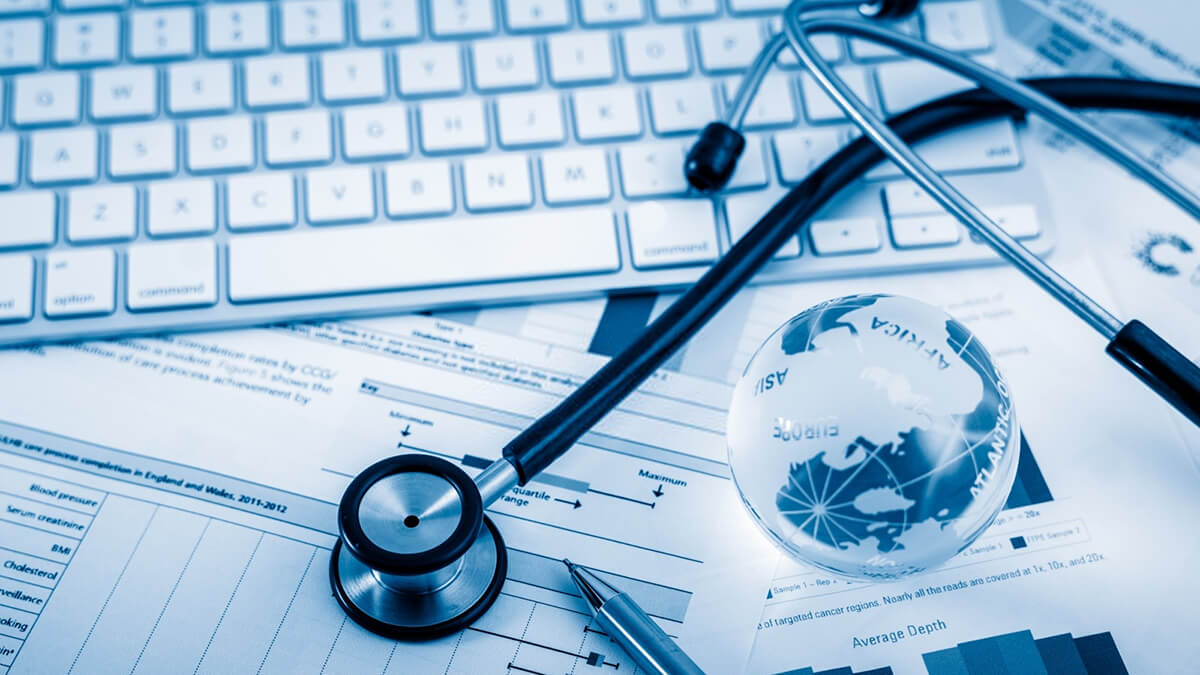The Significance of Medical Administration in Healthcare Administration
The Significance of Medical Administration in Healthcare Administration
Blog Article
Innovations in Medical Administration: Just How Modern Technology Is Reshaping Health Care Management
Electronic Health Records (EHR) have actually come to be the backbone of efficient patient data management, while telemedicine bridges distances, making medical care easily accessible to even the most remote locations. As these advancements take center stage, a crucial question arises: how will these innovations better redefine the medical care experience for both carriers and individuals in the coming years?
Development of Electronic Wellness Records
Over the past few years, the development of electronic wellness records (EHRs) has significantly changed the landscape of clinical management. Originally developed to digitize client documents, EHRs have broadened beyond their original range to end up being indispensable tools in enhancing health care procedures, improving individual treatment, and enhancing management efficiencies. The transition from paper-based systems to EHRs has minimized redundancies, reduced errors, and promoted smooth information sharing throughout various doctor, thus allowing detailed and coordinated patient care.
EHRs have actually introduced a paradigm shift in medical care monitoring by integrating scientific, administrative, and economic data, therefore permitting even more educated decision-making. The access of real-time individual information encourages healthcare professionals to make prompt analysis and treatment decisions, better improving patient end results. Additionally, EHRs sustain the execution of evidence-based techniques by providing access to the most recent clinical research and therapy standards directly within the medical workflow.
The government incentives and policies have actually accelerated EHR adoption, guaranteeing compliance with standards that protect individual personal privacy and data protection. As the healthcare market remains to embrace electronic transformation, EHRs remain at the forefront of innovation, driving efficiency and boosting the total high quality of healthcare shipment.
Developments in Telemedicine
Telemedicine has quickly advanced in the last few years, fundamentally altering the means healthcare services are provided. This change is largely credited to technological developments that have actually broadened access to treatment, specifically for people in remote or underserved areas. Telemedicine platforms assist in real-time appointments between patients and doctor, thus minimizing the requirement for in-person brows through and significantly reducing wait times.
The integration of video clip conferencing, mobile wellness applications, and remote tracking devices has boosted the range of telemedicine. Clients can now take care of persistent conditions with continuous monitoring, receive prompt consultations, and gain access to expert care without geographical restrictions. This change has not just improved client satisfaction yet has additionally maximized health care operations and resource appropriation.
Furthermore, telemedicine has played an essential role in public wellness, especially throughout pandemics, by lessening the danger of infectious disease transmission. Governing developments have even more supported telemedicine's spreading, with lots of nations modifying plans to allow wider insurance policy protection for virtual check outs.
In spite of difficulties such as electronic literacy and data protection, the continuous growth of telemedicine assures to maintain its trajectory as a keystone published here of modern-day health care administration, offering a much more easily accessible and effective medical care shipment design.
Artificial Knowledge in Medical Care
Structure on the technical innovations seen in telemedicine, artificial knowledge (AI) is quickly becoming a transformative pressure in healthcare management. One of the most compelling applications of AI in health care is predictive analytics, which allows healthcare managers to expect individual requirements, enhance resource appropriation, and boost individual results.

One more notable application is in customized medication, where AI assists in tailoring therapies to specific person profiles by assessing hereditary, way of living, and ecological aspects (medical administration). As AI continues to evolve, its combination right into medical care administration assures to enhance operations, decrease costs, and ultimately boost the top quality of treatment given
Enhancing Information Safety And Security Measures
In the electronic age, guarding patient info has ended up being an important concern in clinical management. As health care companies increasingly depend on electronic systems for managing patient information, the demand for durable data safety measures has grown greatly. Information violations not just threaten individual personal privacy but also lead to substantial economic losses and damages to institutional reputations. The integration of sophisticated safety procedures is paramount.
Healthcare organizations are applying multi-layered protection structures to mitigate risks. Security innovations make certain that sensitive data remains hard to reach to unapproved individuals, both throughout transmission and storage space. Moreover, the fostering of blockchain modern technology provides an encouraging avenue for boosting data stability and traceability, giving an unalterable record of all purchases.

Educating personnel on cybersecurity finest techniques is equally Home Page important. Understanding programs outfit health care personnel with the expertise to recognize and report prospective hazards, such as phishing attempts. By prioritizing data safety and security, medical managements can protect individual info and preserve trust fund.
Improving Person Interaction Systems
While robust data safety actions are basic in shielding person details, equally essential is the enhancement of client communication systems to ensure efficient medical care shipment. In the advancing landscape of healthcare management, technical technologies are playing a crucial duty in changing how doctor interact with people. Reliable interaction systems not just enhance individual satisfaction yet additionally boost medical outcomes by making certain timely and exact information exchange.
This assimilation permits patients to access their clinical details firmly, schedule appointments, and communicate with healthcare carriers efficiently. Additionally, the usage of telemedicine platforms has actually expanded accessibility to health care solutions, particularly for those in remote areas or with movement challenges.
Moreover, man-made intelligence-powered chatbots are being significantly used to look at here provide instantaneous reactions to person inquiries, providing a smooth communication experience. By leveraging these technological innovations, doctor can promote even more tailored individual interactions, eventually leading to boosted patient involvement and adherence to treatment plans.
Conclusion
Telemedicine increases healthcare access for remote populaces, while fabricated knowledge automates tasks and personalizes individual interaction. Jointly, these innovations drive efficiency, minimize expenses, and raise the top quality of medical care delivery, reshaping business procedures in the health care market.
Report this page